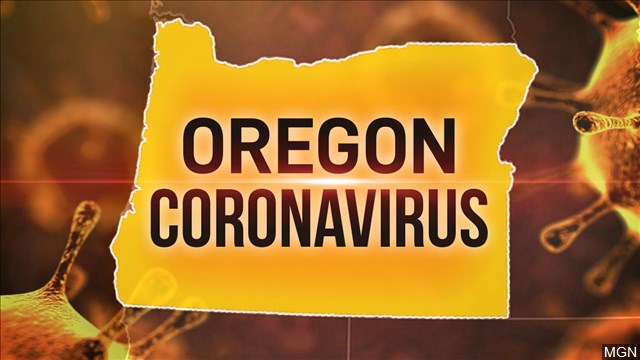New Recommendations For Oregon Schools After Student Tests Positive In Hillsboro

Portland, Ore. – There are brand new recommendations from some Oregon state agencies for schools and universities in the state. Officials held a telephone press conference with local media Sunday afternoon, just hours after a letter was sent out to parents from the Hillsboro School District saying a student has tested positive. A student has tested positive for Covid-19 at South Meadows Middle school. The student had mild symptoms while at school, back on Tuesday. The student went home and is staying there. The school building is getting a deep cleaning this evening. There are no plans to close school. Right now, South Meadows middle school in Hillsboro is expected to be open Monday. Hillsboro Superintendent Mike Scott and Washington County Public Health Officer Dr. Christina Baumann will hold another press conference to update media, parents, faculty and staff on a student case of COVID-19 at South Meadows Middle School Sunday evening. It was streamed by our News Partner KGW:
Click here to read more from Hillsboro School District
State agencies issue COVID-19 guidance to Oregon schools and universities
Health officials recommend taking steps to prevent infection and keeping schools open
OHA Director Patrick Allen was the first to address the media during the press conference Sunday afternoon. Here is his opening statement:
(Portland – March 8, 2020) Public health experts at the Oregon Health Authority (OHA) and education officials with the Oregon Department of Education and the Higher Education Coordinating Commission today issued guidance and best practices from public health experts to schools, colleges and universities for decision-making concerning the novel coronavirus in Oregon.
At this time, the guidance recommends against closing schools and campuses where no cases of COVID-19 are present. It also recommends that schools, colleges and universities consider all alternatives before closing a school, college or university in the event that a COVID-19 case is detected among students or staff. The guidance identifies important strategies educational administrators can use to reduce the risk of COVID-19 within a school community and protect students from lost instructional time.
The guidance recognizes that the instruction schools and universities provide is vital to student well-being. In addition, schools provide many students their only ready access to health care and food. More than 22,000 students in Oregon experienced some form of homelessness in 2019.
The recommendation gives schools tools to prevent COVID-19 transmission and maintain a normal learning environment for students and staff. Under existing OHA guidance, individuals who have COVID-19, including students and educators, will be subject to self-isolation to prevent others from becoming infected.
Among the measures that educational institutions should consider are increasing the frequency of handwashing for children, youth and adults; cleaning high-touch, high-traffic areas within schools frequently, and screening for illness among students, staff and visitors. The policy also highlights more aggressive measures involving social distancing strategies that school leaders and educators could employ to minimize the spread of COVID-19 or other infections. This could include staggering recess and lunch periods to reduce the number of students coming into close contact with each other.
The recommendations are meant to guide decision-making for school districts, colleges and universities, in consultation with state and local health officials. School districts and higher education administrators have the option of closing a school or university if many students and staff are affected by COVID-19, leaving the school unable to operate safely and effectively. Other measures, such as social distancing techniques, should be deployed by schools and universities first, with extended closures viewed as a measure of last resort. For example, an adult-serving institution with options for shifting to remote instruction without severe community disruption may weigh the recommendations differently.
OHA state health officer Dr. Dean Sidelinger said, “We know many parents, students and educators are worried that COVID-19 will appear in their school communities. We want schools and universities to know there are steps they can take to prevent infection and keep students safe, healthy and learning in the classroom.” State health officials issued the guidance after extensive consultation with local public health officers, state medical experts, and educational stakeholders and leaders, including educators, parents, school district superintendents, school board members and higher education officials.
David Bangsberg, M.D., M.P.H., Dean of the OHSU-PSU School of Public Health said, “This recommendation represents a reasonable and thoughtful approach given the information that is available at this time. This is a dynamic situation and will require continued partnership between schools, colleges and universities and the public health community to make real-time decisions for each situation.”
“I appreciate the strong partnership and guidance from the Oregon Health Authority as Oregon rallies in response to the COVID-19 challenge,” Oregon Department of Education Director Colt Gill said. “Keeping schools open is the best option for our state and, most importantly, for our students. Our safety efforts should focus on practicing good hygiene, staying home when we are not feeling well, and cleaning surfaces in our schools. We can all play a part with these simple steps to protect ourselves and our friends, classmates and community.”
Ben Cannon, Executive Director of the Higher Education Coordinating Commission said, “Close coordination between Oregon’s colleges and universities, the HECC, and the Oregon Health Authority is helping to ensure that we keep students, faculty, and staff safe while minimizing educational disruptions. We appreciate the OHA for the clear guidance it is providing to Oregon’s colleges and universities today, and we’ll continue to work closely with OHA as this situation evolves.”
Dr. Ed Ray, President of Oregon State University said, “The health and safety of our students, faculty, and staff is the top priority for every higher education institution in Oregon. We appreciate the guidance from OHA and the Governor’s office as we prepare and respond to the evolving outbreak. We will continue to work closely with state and local public health officials.”
“Maintaining the health and safety of Oregon’s students, families and communities is always a top priority for our educators,” said Oregon Education Association President John Larson. “We appreciate the Oregon Health Authority’s use of sound, science-based guidelines as health and education leaders work together to decide what is best for our students. Based on the available research, that means keeping our public schools open.”
Jim Green, Executive Director of the Oregon School Boards Association, said, “Our health and education leaders in Oregon are working closely together as this situation evolves. Our primary goal is keeping kids and communities safe, and what research and experience are telling us now is that we should be trying to keep our schools open as we work through this.”
Kristi Dille, president of Oregon PTA said, “I’m thankful OHA and ODE are sending a strong signal to parents and other members of the community that our schools should stay open. This clear guidance allows us to meet the needs of students and families.”
“The health and safety of our students, faculty, and staff is the top priority for every higher education institution in Oregon,” said Chief Resilience Officer and Associate Vice President for Safety and Risk Services Andre LeDuc. “University of Oregon appreciates the Higher Education Coordination Commission and Oregon Health Authority’s coordinated efforts to share fact-based information to assist all campuses in Oregon in preparing and responding to the evolving outbreak.”
OHA continues to recommend that all people in Oregon take everyday precautions to prevent the spread of many respiratory illnesses, including COVID-19 and influenza: Cover your coughs and sneezes, wash your hands often with soap and water for 20 seconds, avoid close contact with people who are sick and avoid touching your eyes, nose and mouth with unwashed hands.
Most people with COVID-19 have mild symptoms. If you are feeling sick with mild symptoms and do not need to seek medical care, stay home while you recover. If you are sick and plan to seek care, please call before going in for care so arrangements can be made to prevent exposing others. For urgent medical needs, call 911.
Students, families and school staff can find more information about COVID-19 at:
- The Oregon Health Authority’s COVID-19 web page.
- The Oregon Department of Education’s COVID-19 resources for schools.
- The Oregon Higher Education Coordinating Commission’s COVID-19 higher education resources web page.
- Call 211.



